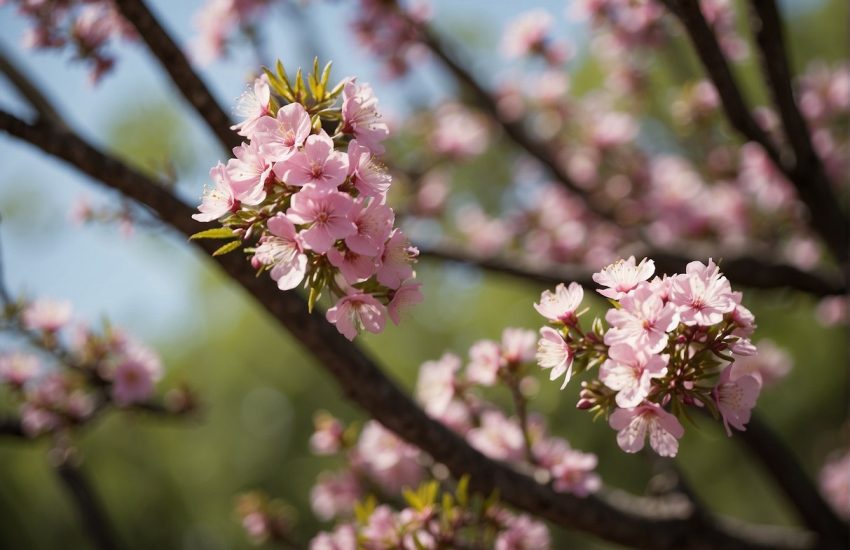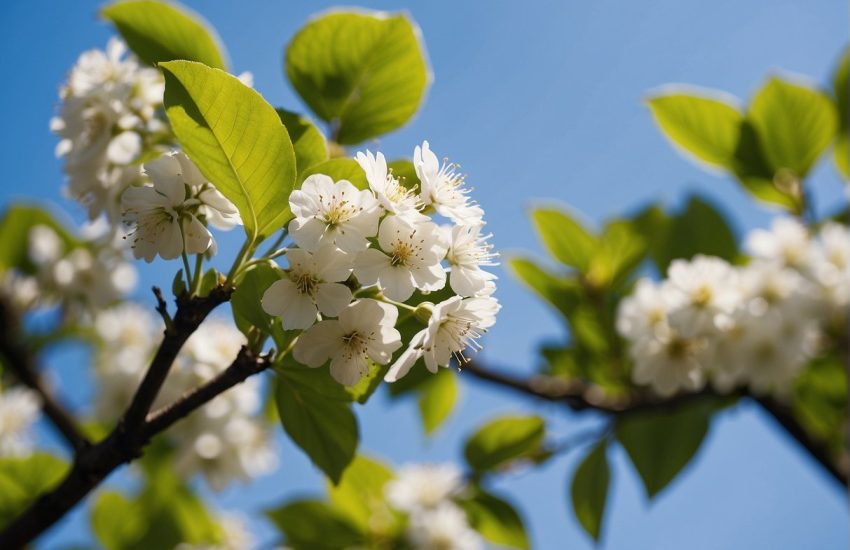Can Cherry Blossoms Grow in Texas? Exploring the Possibility of Growing Cherry Blossoms in the Lone Star State
Cherry blossoms are known for their delicate beauty and are a popular attraction in many parts of the world. However, many people wonder if cherry blossoms can grow in Texas, given the state’s unique climate and weather patterns. The answer is yes, cherry blossoms can grow in Texas, but it depends on the variety and the specific growing conditions.

Texas has a diverse climate and geography, with different regions experiencing varying degrees of heat, humidity, and rainfall. Some cherry blossom varieties, such as the Yoshino cherry, can thrive in Texas, while others may struggle to adapt to the state’s climate. It’s important to choose the right variety of cherry blossom and to plant it in the right location, with the right soil, sunlight, and watering conditions.
If you’re interested in growing cherry blossoms in Texas, it’s important to do your research and consult with experts in the field. There are many resources available online and in local gardening communities that can help you choose the right variety of cherry blossom for your specific location and growing conditions. With the right preparation and care, you can enjoy the beauty of cherry blossoms in your own backyard, even in the heart of Texas.
Cultivating Cherry Blossoms in Texas
Climate Compatibility
Cherry blossom trees are typically associated with colder climates, but there are varieties that can be grown in Texas. The unique climate of Texas, with mild winters and heatwaves in summer, can make it challenging to cultivate cherry blossoms. However, with proper care and attention, it is possible to grow healthy cherry blossom trees in Texas.
Best Varieties for Texas
When selecting cherry blossom trees to grow in Texas, it is important to choose varieties that are heat-tolerant and suitable for the state’s unique climate. Some of the best varieties for Texas include the Yoshino cherry, Okame cherry, Kwanzan cherry, Taiwan cherry, and Prunus x Yedoensis.
Planting and Care
To successfully grow cherry blossom trees in Texas, it is important to pay attention to soil conditions, moisture levels, and sunlight. Cherry trees require well-draining soil that is nutrient-rich and has plenty of organic matter. The soil pH should be between 6.0 and 6.5, and the soil should be kept moist but not waterlogged.
Cherry trees should be planted in full sun and should receive at least six hours of direct sunlight each day. They should be pruned during the dormant season to encourage healthy growth, and fertilized in early spring with a balanced fertilizer. Mulching around the base of the tree can help retain moisture and keep the soil cool.
Irrigation is important for cherry trees, especially during the hot summer months. They should be watered deeply once a week, and more often during periods of drought. Regular maintenance, including pruning and fertilizing, can help ensure healthy growth and prevent diseases.
Overall, while it can be challenging to cultivate cherry blossom trees in Texas, with the right care and attention, it is possible to grow healthy and beautiful trees that can add a stunning touch to any landscape or garden.
Regional Considerations and Locations

North Texas and the Dallas Area
Cherry blossoms can be grown in North Texas and the Dallas area, but it is important to choose the right variety and location. The Dallas Arboretum and Botanical Garden is a great place to see cherry blossoms in full bloom. They have over 100 Yoshino cherry blossom trees that line the central walkway, the Paseo de Flores. These trees are known for their beauty and elegance and are a sight to behold during early April.
In addition to the Yoshino cherry blossom, other varieties that can be grown in North Texas and the Dallas area include the Okame cherry blossom and the Kwanzan cherry blossom. The Okame cherry blossom is known for its early bloom and can be grown in full sun exposure. The Kwanzan cherry blossom is another resilient variety that is tolerant of humidity and dry soil. It is a perfect tree for central Texas and the warmer climate in the south.
Central and Southern Texas
Central and southern Texas have different weather conditions compared to North Texas, and it is important to choose the right location and variety for optimal growth. In general, cherry blossoms prefer full sun exposure, but they can also grow in partial shade. They require adequate water supply, and drip irrigation is recommended.
In Central Texas, the Japanese Garden at the Fort Worth Botanic Garden is a great place to see cherry blossoms in full bloom. It features a large pond with waterfalls and is home to several cherry blossom trees. In San Antonio, the Japanese Tea Garden is another great location to see cherry blossoms. It features a beautiful pond and several cherry blossom trees.
In Southern Texas, Austin is a great location to grow cherry blossoms. The Lone Star State variety is a good choice for the region and is known for its resilience to heat and drought. It can be grown in full sun exposure and requires adequate water supply.
Overall, cherry blossoms can be grown in Texas with the right variety and location. Whether you are in North Texas, Central Texas, or Southern Texas, there are plenty of locations to see these beautiful trees in full bloom.


